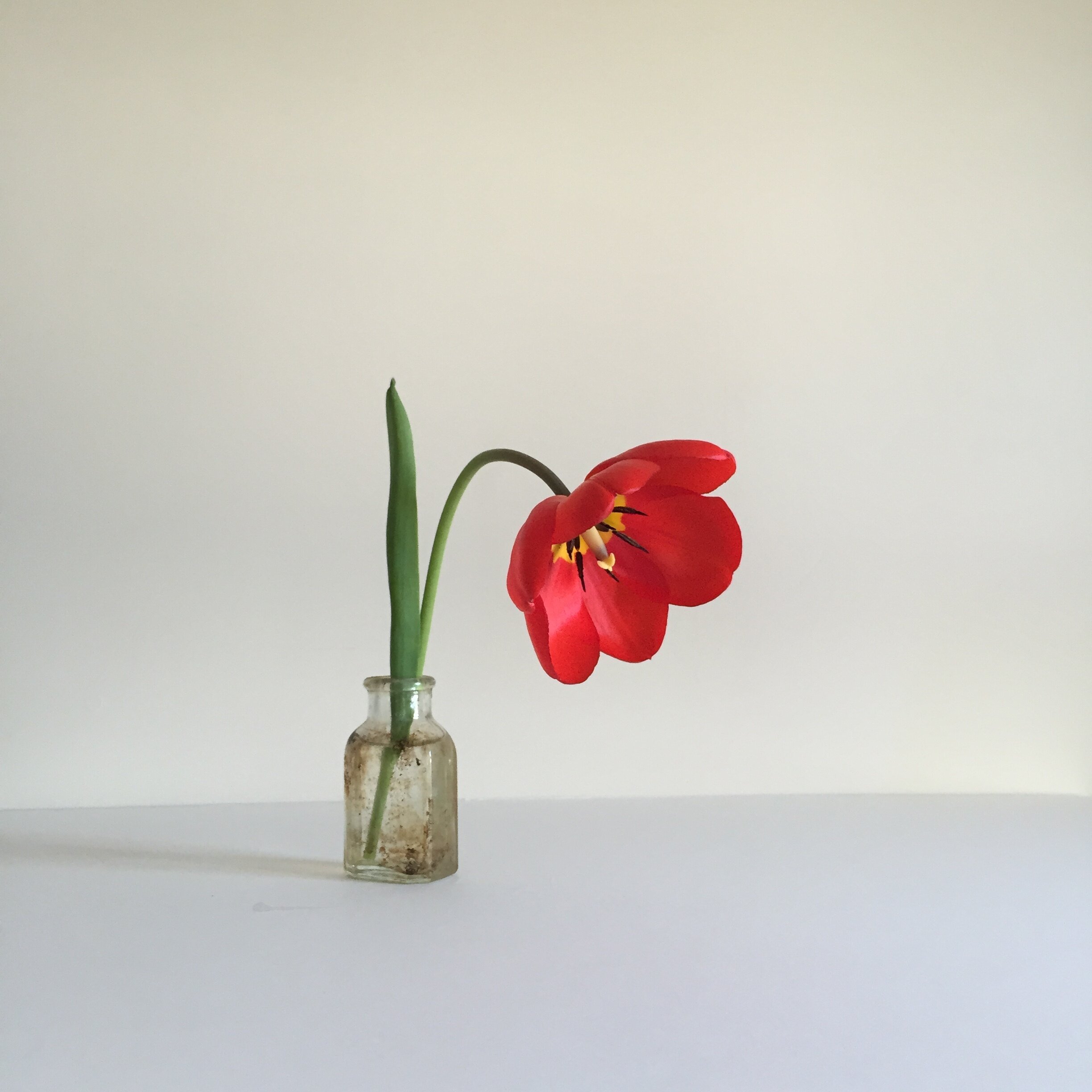The Gardener's Friend — On Tulipa
You are a recipient of Coucou Postale, a postcard series designed to engage and delight readers through stories and art using good old fashioned mail and the magic of the Internet.
Tulipa — Newport, Rhode Island, 2015
I know what you’re thinking. Tulips? How boring. This month, I invite you to see tulips with a fresh pair of eyes.
Growing up in Florida in the 1980s, the only place to see tulips were at Epcot Center. I went once. So in my early twenties, when I visited Oxford, Mississippi, in the spring, I fell under the flower’s enchantment. It was a powerful spell. Tulips were everywhere, their bright colors like exclamation points on dull winter lawns.
While absence may make the heart grow fonder, surplus leads to ingratitude. Along with tulips, Oxford brimmed with other flowers. Scentless tulips were lost among the perfumes of jonquils, redbuds, azalea, and wisteria. In Rhode Island, there were even more spring blossoms to enjoy. Since the flowers bloomed across a longer period, I could savor each one individually.
Tulips were one such bloom. Against a barren, winter landscape, yellow and red tulips offered a fiesta of color. I brought the blossoms indoors regularly. Rather than tossing them after their petal lips parted, I let them open until they no longer resembled the tulips I knew. This was how I discovered that a fully opened tulip, once opened, was completely unrecognizable, but even more breathtaking. And, they held a secret. Within their tightly closed bloom, flecks of black and painterly strokes of yellow and white adorn the interior. They are meant to slowly unfold.
In the same way, the history of tulips has unfolded. Rooted in 10th-century Persia, their Persian name laleh when written in Arabic has the same letters as “Allah.” As a result, they acquired a holy status in the Ottoman Empire and defined an era of wealth and prosperity. Later, they were exported to the gardens of western Europe. They became the lead actor in the drama of “tulip mania”, a period in the 1600s when one prized bulb could buy an entire home.
It was nearly 200 years later that Americans embraced the tulip. The first ones appeared in the U.S. in the 1800s not far from where I lived in Rhode Island in Lynn and Salem, Massachusetts. Just as they were in Europe and the Middle East, they symbolized status. People bred whatever color or style was in vogue, oblivious the long term damage of their desire. The tulip's refined beauty, indeed a strength, is also a weakness. Tulips are in a rare group of flowers whose ancestors don’t survive alongside their cultivated cousins. Unlike other flowers, tulips don't reliably return every year. Only those with classical appeal remain in posterity.
If people saw the inner parts of tulips, the petals that require patience to reveal their innermost secrets and beauty, we would see tulips as more than just a garden carpet changed with the latest color trend. Like tulips, we are more than a carpet of color. We are a mystery just waiting to unfold. — GF

